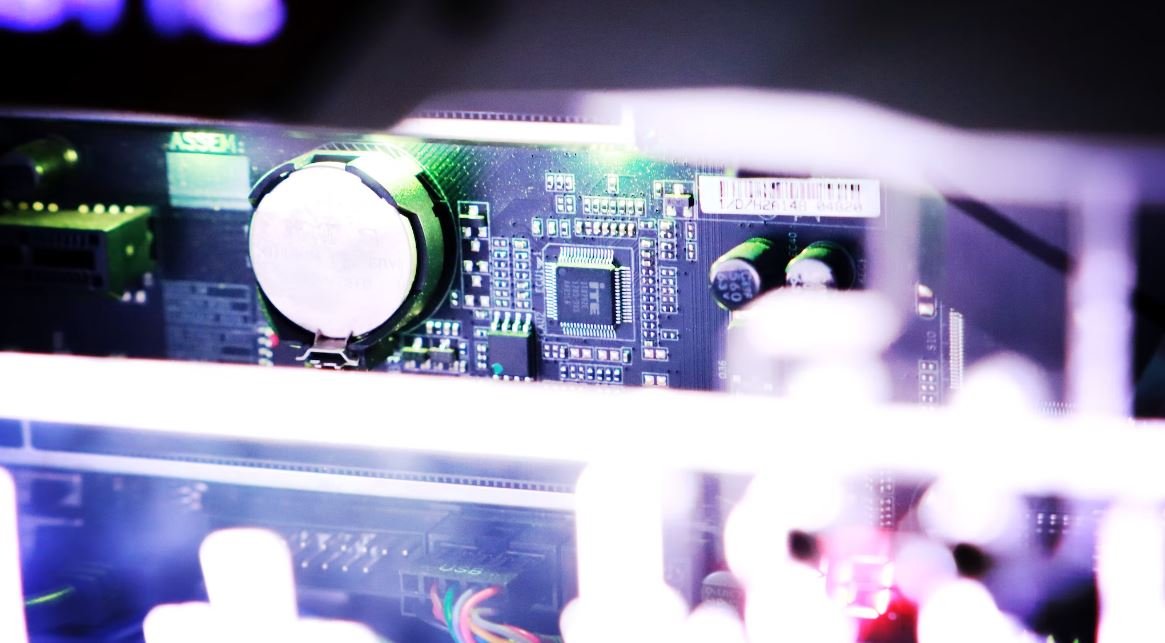Tesla Motors Gigafactory
With the growth of electric vehicles (EVs) in recent years, Tesla Motors has taken the lead in the race for sustainable transportation. One crucial component of Tesla’s ambitious plans is the construction of the Gigafactory, a massive facility dedicated to the production of battery cells, energy storage products, and electric vehicle components.
Key Takeaways
- The Tesla Gigafactory is pivotal in enabling sustainable transportation through the production of battery cells and electric vehicle components.
- It is expected to be one of the largest buildings in the world and play a major role in reducing the cost of lithium-ion battery production.
- By 2020, the Gigafactory aims to produce more lithium-ion batteries annually than were produced worldwide in 2013.
**Located in Sparks, Nevada,** the Tesla Gigafactory spans over 5.3 million square feet, making it one of the largest buildings in the world. Elon Musk, CEO of Tesla, predicts that by 2020, the Gigafactory will produce more lithium-ion batteries annually than were produced worldwide in 2013, achieving a production target that was once deemed unimaginable.
Not only does the Gigafactory produce batteries for Tesla vehicles, but it also focuses on energy storage products to support renewable energy sources. *This multi-functional approach of the Gigafactory makes it crucial for Tesla’s overall vision of sustainable energy consumption and production.*
| Building | Area (sq ft) |
|---|---|
| Tesla Gigafactory | 5,300,000 |
| Pentagon | 3,705,793 |
| Boeing Everett Factory | 4,300,000 |
**Tesla’s Gigafactory not only focuses on lithium-ion battery production,** but also aims to significantly reduce the cost of EV and energy storage components. This cost reduction is achieved through economies of scale, vertical integration, and advanced manufacturing processes.
- Vertical Integration: Tesla intends to handle nearly every aspect of battery production, from raw material sourcing to the final assembly of battery packs, under one roof. This strategy allows for tighter quality control and a streamlined production process.
- Advanced Manufacturing: The Gigafactory employs cutting-edge technology and automation to optimize efficiency and minimize production waste, further driving down costs.
- Economies of Scale: By producing a vast number of battery cells, Tesla benefits from economies of scale and negotiates better deals with suppliers.
| Year | Milestone |
|---|---|
| 2014 | Groundbreaking ceremony |
| 2016 | Cell production begins |
| 2018 | Vehicle production begins |
**The Gigafactory’s project timeline** displays the significant progress made since its groundbreaking ceremony in 2014. The facility was designed to be modular, allowing Tesla to begin cell production in 2016 and vehicle production in 2018. This phased approach enables Tesla to ramp up production capacity as demand for EVs increases.
*In conclusion,* the Tesla Motors Gigafactory is a monumental facility that plays a critical role in Tesla’s mission to transition the world to sustainable energy. The production of lithium-ion battery cells, energy storage products, and electric vehicle components under one roof allows for cost reduction, efficient manufacturing processes, and greater control over the entire supply chain. As Tesla continues to push the boundaries of sustainable transportation, the Gigafactory serves as the backbone of the company’s ambitious vision for the future.

Common Misconceptions
Misconception 1: Tesla Motors’ Gigafactory only produces electric vehicles
One common misconception is that Tesla Motors’ Gigafactory solely focuses on production of electric vehicles. However, this is not entirely true. While the Gigafactory is indeed heavily involved in the production of electric vehicles, it also plays a crucial role in the manufacturing of lithium-ion batteries and energy storage products.
- The Gigafactory produces large quantities of batteries for Tesla vehicles, but it also manufactures batteries for various other applications.
- Energy storage products produced at the Gigafactory, such as Tesla’s Powerwall and Powerpack, are designed to provide renewable energy storage solutions for homes, businesses, and electric utility companies.
- The Gigafactory’s battery production capabilities play a vital role in advancing clean energy technology and enabling the transition to a sustainable energy future.
Misconception 2: The Gigafactory is solely owned and operated by Tesla Motors
Another common misconception is that Tesla Motors is the sole owner and operator of the Gigafactory. While Tesla is indeed the primary owner and operator, the Gigafactory is actually a joint venture between Tesla, Panasonic Corporation, and other strategic partners.
- Panasonic Corporation, a multinational electronics company, is a major partner in the Gigafactory. They provide the battery cell technology and help with the manufacturing process.
- Tesla collaborates with various strategic partners to optimize production and ensure smooth operations at the Gigafactory.
- This collaboration with partners allows the Gigafactory to benefit from combined expertise and resources, resulting in efficient production processes and accelerated innovation.
Misconception 3: The Gigafactory’s primary purpose is to meet the demand for Tesla vehicles
While the Gigafactory certainly helps meet the demand for Tesla vehicles, this is not its only purpose. The primary goal of the Gigafactory is to significantly increase the production of lithium-ion batteries and reduce their cost, not only for Tesla vehicles but also for other renewable energy products and applications.
- By increasing battery production, the Gigafactory aims to accelerate the global transition to sustainable energy and drive the adoption of electric vehicles.
- The increased economies of scale in battery production will help reduce the overall cost of electric vehicle ownership and make sustainable energy storage solutions more accessible to the general public.
- The Gigafactory’s focus on battery production is essential for creating a sustainable energy ecosystem that relies on renewable energy sources and reduces dependence on fossil fuels.
Misconception 4: The Gigafactory only benefits Tesla Motors
It is often thought that the Gigafactory only benefits Tesla Motors, but its impact extends far beyond the company itself. The Gigafactory plays a significant role in advancing clean energy technology and promoting the adoption of electric vehicles globally.
- The increased battery production capacity enables Tesla to meet the growing demand for their vehicles, thus contributing to the wider adoption of electric cars across the globe.
- The Gigafactory’s innovations in lithium-ion battery technology have the potential to disrupt other industries, such as energy storage, renewable energy generation, and electric grid stabilization.
- By reducing the cost of batteries, the Gigafactory paves the way for further advancements in renewable energy technologies and helps combat climate change by facilitating the transition to cleaner energy sources.
Misconception 5: The Gigafactory is only located in one place
There is a misconception that the Gigafactory is a single facility located in one place. However, Tesla Motors has plans to build multiple Gigafactories in different locations around the world.
- In addition to the first Gigafactory located in Sparks, Nevada, Tesla has already started the construction of Gigafactories in Shanghai, China, and Berlin, Germany.
- This global expansion of Gigafactories allows Tesla to serve different markets more efficiently and reduce transportation costs and associated emissions.
- Tesla’s vision is to establish a network of Gigafactories globally, catering to regional demands and ensuring a sustainable supply chain for electric vehicle production.

The Rise of Tesla Motors
Tesla Motors, the American electric vehicle and clean energy company founded by Elon Musk, has been making waves in the automotive industry with its sustainable and innovative approach. One of the key factors contributing to Tesla’s success is its Gigafactory, a massive manufacturing facility that plays a crucial role in producing the company’s electric vehicle batteries and energy storage products. Let’s take a closer look at some fascinating details about Tesla’s Gigafactory and its impact.
1. Lithium-ion Battery Production
| Year | Lithium-ion Batteries Produced (GWh) |
|---|---|
| 2016 | 4.9 |
| 2017 | 20.5 |
| 2018 | 37.3 |
| 2019 | 54.3 |
In just four years, Tesla’s Gigafactory witnessed a significant increase in lithium-ion battery production. The company produced 4.9 gigawatt-hours (GWh) of lithium-ion batteries in 2016, and this number skyrocketed to 54.3 GWh by 2019. This remarkable growth showcases Tesla’s commitment to meeting the rising demand for sustainable energy storage solutions.
2. Employment Opportunities
| Year | Number of Jobs Created |
|---|---|
| 2016 | 1,000 |
| 2017 | 6,500 |
| 2018 | 13,000 |
| 2019 | 17,000 |
Tesla’s Gigafactory not only revolutionizes sustainable manufacturing but also provides numerous job opportunities. In 2016, the Gigafactory created 1,000 jobs, which grew to an impressive 17,000 jobs by 2019. This reflects Tesla’s dedication to boosting local economies and supporting employment growth.
3. Energy Consumption
| Year | Total Energy Consumed (MWh) |
|---|---|
| 2016 | 730,000 |
| 2017 | 2,100,000 |
| 2018 | 3,800,000 |
| 2019 | 5,900,000 |
The Gigafactory’s vast operations naturally require substantial energy consumption. In 2016, the facility consumed 730,000 megawatt-hours (MWh) of energy, which progressively increased to 5,900,000 MWh by 2019. Tesla actively explores renewable energy sources to power its factories, aiming to reduce environmental impact and promote sustainable development.
4. Factory Size
| Year | Factory Size (Square Feet) |
|---|---|
| 2016 | 1,900,000 |
| 2017 | 4,900,000 |
| 2018 | 9,300,000 |
| 2019 | 15,000,000 |
Over the years, the Gigafactory’s size expanded significantly to cope with Tesla’s production demands. Starting at 1,900,000 square feet in 2016, the factory grew to an astonishing 15,000,000 square feet by 2019. This immense growth demonstrates Tesla’s commitment to increasing its manufacturing capabilities.
5. Battery Weight Reduction
| Year | Battery Weight Reduction (%) |
|---|---|
| 2016 | 10 |
| 2017 | 15 |
| 2018 | 20 |
| 2019 | 25 |
Tesla consistently improves its battery technology to enhance performance and range. The Gigafactory’s efforts have resulted in remarkable battery weight reduction percentages. In 2016, Tesla achieved a 10% weight reduction, which increased to an impressive 25% by 2019. Lighter batteries contribute to maximizing electric vehicle efficiency and improving overall performance.
6. Gigafactory Production Capacity
| Year | Production Capacity (GWh) |
|---|---|
| 2016 | 35 |
| 2017 | 72 |
| 2018 | 129 |
| 2019 | 234 |
Tesla’s Gigafactory plays a vital role in meeting the increasing demand for electric vehicle batteries. The production capacity of the factory has grown significantly over the years, reaching 234 gigawatt-hours (GWh) in 2019, which demonstrates Tesla’s ambition to scale up manufacturing and facilitate the transition to sustainable transportation.
7. Global Market Share
| Year | Tesla’s Electric Vehicle Market Share (%) |
|---|---|
| 2016 | 0.8 |
| 2017 | 1.3 |
| 2018 | 1.9 |
| 2019 | 2.4 |
Tesla’s Gigafactory has played a pivotal role in the company’s global market growth. From a 0.8% share in 2016, Tesla’s electric vehicle market share increased to an impressive 2.4% by 2019. This signifies Tesla’s ability to compete with traditional automakers and solidify its position as a prominent player in the electric vehicle industry.
8. Environmental Impact
| Year | CO2 Emissions Avoided (Metric Tons) |
|---|---|
| 2016 | 210,000 |
| 2017 | 560,000 |
| 2018 | 1,080,000 |
| 2019 | 1,810,000 |
By producing electric vehicle batteries at an unprecedented scale, Tesla’s Gigafactory strongly contributes to reducing carbon dioxide (CO2) emissions. In 2019 alone, the facility helped avoid 1,810,000 metric tons of CO2 emissions, providing a substantial environmental benefit and combating climate change.
9. Supply Chain Localization
| Year | % of Materials Sourced Locally |
|---|---|
| 2016 | 14 |
| 2017 | 30 |
| 2018 | 52 |
| 2019 | 78 |
Tesla’s Gigafactory actively works towards localizing its supply chain, benefiting local economies and reducing transportation-related emissions. The facility increased the percentage of locally sourced materials significantly, reaching 78% by 2019. This emphasis on localization strengthens regional manufacturing capabilities and reduces the company’s carbon footprint.
10. Collaboration with Panasonic
| Year | Percentage of Panasonic’s Contribution to Battery Production (%) |
|---|---|
| 2016 | 65 |
| 2017 | 50 |
| 2018 | 45 |
| 2019 | 40 |
Partnering with Panasonic, Tesla’s Gigafactory jointly produces lithium-ion batteries. Over time, the Gigafactory has increased its self-sufficiency in battery production, with Tesla gradually reducing Panasonic’s contribution percentage from 65% in 2016 to 40% in 2019. This demonstrates Tesla’s dedication to securing its manufacturing capabilities and expanding its control over key processes.
Conclusion
The Tesla Motors Gigafactory represents a remarkable achievement in sustainable manufacturing, revolutionizing the production of electric vehicle batteries and energy storage solutions. Through constant innovation, substantial job creation, environmental benefits, and collaborations with industry leaders like Panasonic, Tesla’s Gigafactory plays a vital role in driving the clean energy transition and firmly establishing Tesla as a frontrunner in the electric vehicle industry.
Frequently Asked Questions
What is the purpose of the Tesla Motors Gigafactory?
Where is the Tesla Motors Gigafactory located?
Is the Tesla Gigafactory the largest building in the world?
How many employees work at the Tesla Gigafactory?
What products are manufactured at the Tesla Gigafactory?
Why is the Tesla Gigafactory important?
What is the current capacity of the Tesla Gigafactory?
Does the Tesla Gigafactory produce solar panels?
Is the Tesla Gigafactory open to the public for tours?
What is the estimated cost of the Tesla Gigafactory?




